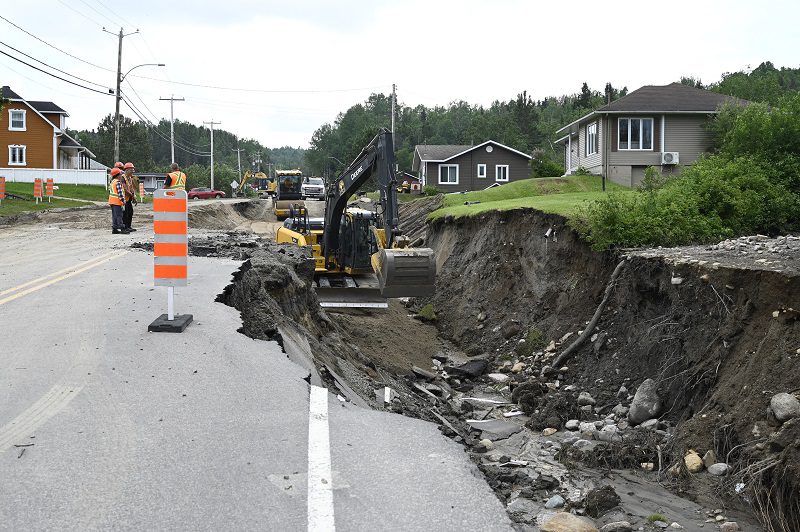Quebec landslides bring insurance coverage questions into focus

With heavy rains triggering flooding and landslides in parts of Quebec, some clients may understandably have questions about which perils are covered under their insurance policies.
Certain types of water damage are typically covered, while coverage for overland flooding or sewer backup may be available as optional add-ons. But generally speaking, landslides or other earth movements are not covered under home and business insurance policies in Canada.
Why?
“One of the challenges with landslides or other earth movements is there is no way to predict them — for insurers, you can’t price premiums if you can’t predict the risk,” Insurance Bureau of Canada (IBC) told Canadian Underwriter earlier this week.
On the other hand, earthquake, flood and many other perils are predictable. “There are risk modellers that try to predict if or when these events will take place, as well as the magnitude and level of risk,” IBC said. “The same mechanism does not exist for landslides.”
IBC recommends homeowners review their insurance policies and contact their insurance representatives if they have questions.
Landslides have been in the news recently. Two Quebecers were killed at the beginning of the month in a landslide in the municipality of Rivière-Éternité, about 260 kilometres northeast of Quebec City. A 44-year-old woman and a 48-year-old man died after heavy rains (more than 130 millimetres over two hours) triggered landslides and flooding.
A provincial engineer said the victims were trying to clear debris from a small landslide off a road when a larger landslide hit, The Canadian Press reported.
More recently, the town of Ste-Brigitte-de-Laval declared a state of emergency as torrential rain caused rivers across southern Quebec to burst free of their banks. As of July 11, between 500 and 600 people were forced to evacuate their homes when the mayor declared a state of emergency for at least two days.
Marc Proulx, the town’s general director, told CP about 250 homes were “flooded or near-flooded” after the Montmorency River rose rapidly and inundated roads and communities.
Environment Canada warned the amount of rainfall in the heaviest-hit regions, when combined with precipitation from previous days, could trigger flash floods, landslides and water accumulation on roads.
Joshua Menard-Suarez, a spokesman with Quebec’s public safety department, said several parts of southern and central Quebec are being monitored for possible flooding and landslides. Officials are particularly concerned about the Charlevoix region northeast of Quebec City as well as the Eastern Townships outside Montreal.
He said people should notify municipal officials if they see indications that could signal a landslide, such as unusual cracks or bulges on sloping ground or unusual water flows.
“The precipitation that falls on waterways, we see the water level rise in real time,” Menard-Suarez told CP. “But landslides are more insidious. Sometimes enough water falls to impact the ground so that it becomes susceptible to a landslide that finally takes place a few days after.”
Environment Canada had forecasted between 80 millimetres and 120 millimetres of rain would fall in Quebec’s Charlevoix and Eastern Townships area by end of day Tuesday.
Feature image: Crews begin repairs to a washed-out section of highway 170 in Riviere-Eternite, Que., Sunday, July 2, 2023. A major landslide caused by heavy rain cut highway 170 between Saguenay, Que., and Saint-Simeon. Two people are missing after they were swept from the road by flood waters. THE CANADIAN PRESS/Jacques Boissinot



